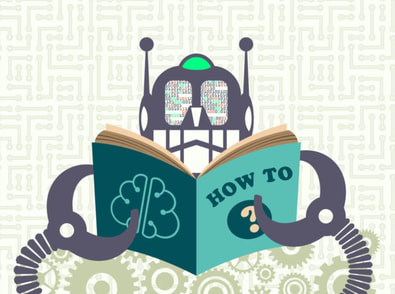 By - Drew Page at Siege Media Nonprofits can learn a lot about technology, operations, and more from companies in the for-profit sector. One technology that has been gaining popularity among c-level executives is machine learning and its contributions to modern Artificial Intelligence (AI). Since true AI — the ability for computers to process unstructured data, form conclusions, and take action — is not yet on the horizon of possibilities, machine learning models have become synonymous with AI. Machine learning is just a new form of algorithm. We train the machine by entering labeled (structured) data that the machine then “learns” how to formulate statistical predictions that it then applies to unlabeled (raw) data. A common example of a machine learning model is one that takes photos as input and analyzes the subjects and objects within them. The model is trained on a large dataset of images that have been accurately labeled regarding the subjects within. Based on this training, the model can then predict what features, if any, of a new photo meet the criteria of the subjects within the images used in training. Technologists and researchers are discovering new ways to incorporate machine learning on mobile devices and more. As a model is fed more data, its accuracy improves. Much like how a study with few participants is not statistically significant, a machine learning model with few datapoints is not adequately trained, and therefore prone to errors. The repercussions of errors and omissions from an inadequately trained model have been explored in the for-profit sector and the consensus is that significant biases can be introduced into the results. These biases and ethical concerns are valid and must be thought about deeply before putting faith in the efficacy of any machine learning model. What can nonprofits learn from this thought-leadership for our own organizations? And how can nonprofits benefit from this technology? Machine Learning Algorithm for Fundraising Fundraisers can train a machine learning model on the personas of previous donors, which would then allow the model to analyze and predict prospective donors that match the persona of these real donors. Another model could analyze an individual’s digital footprint, social media profiles, and more to understand what strategies, messaging, and channels would be most effective for fundraising. These are simply examples of what is possible, but before these ideas and more are explored for your particular use case, it’s important to understand the ethical implications machine learning can have on society. Bias and Ethics in AI for Nonprofit FundraisingIf bias is introduced in a fundraising model, we run the risk of passing over some prospective contributors that would otherwise have become donors. It’s not hard to imagine that a model trained only on high net-worth individuals would place a low confidence score on prospective donors of lower socioeconomic statuses, or those whose wealth is not visible to Prospect Research or a screening service. Not to mention the stereotypes that could be introduced when using a small sample population of people with similar walks of life. If you are looking to train a model to accurately represent the public at large, you should seek to use a dataset with a large number of data points. In AI, the more data the better. The ethical consequences of AI being used for nonprofits and other charitable organizations are important considerations before we invest more in this technology. Privacy concerns and unique identifiers must be managed securely. Facebook, for example, allows marketers to target audiences who had previously visited their website. Although Facebook knows the personal details of each individual receiving a campaign, they will not share this level of information with marketers. If you plan to build AI that segments or otherwise classifies individuals, you must understand how their privacy and information are tracked, collected, computed, or otherwise manipulated. How Nonprofits Should Approach AI If you decide to develop an AI algorithm to facilitate your fundraising efforts, you should proceed with caution. The problems discussed here will only be resolved if they are recognized, researched, and faced head-on. If you’re ready to develop an AI solution, keep these caveats in mind. 1. Develop Your Data The key to a successful AI product is providing clean data. The model must be fed a large amount of clean data. Consider the AI that was built to master the strategy game, Go. The model was fed a large amount of data about nearly everything related to the game, including the rules, possible opening moves, closing moves, and everything in between. After this “supervised” training, the AI was able to go on “unsupervised” and play billions of games against itself and master the game. Even after billions of games, the AI was not completely effective in beating human players. But since then, the AI has continued to train on more and more data, until it reached a win rate against human players in excess of 90%. This is why you must continue to develop more and more data, and make sure the data is accurately labeled, organized, and stored. 2. Thoroughly Test Your AI Until the dataset is large enough to have an extremely low margin for error, you should manually test its results. As we teach students building human intelligence, we test students on how well they understand the information. The same strategy can be applied to AI. We mustn’t follow the results of our AI models blindly. Instead, validate the results being output are accurate and reliable. For example, if your fundraising AI predicts one group of people will become donors with near certainty, and another group will most definitely not become donors, test these predictions with real prospecting efforts. 3. Use AI to Support Human Efforts A great strategy for introducing AI is to use it as an extension of your team’s efforts, not a replacement. It bears repeating, AI is not a replacement for humans. Put another way, analytics and automation cannot replace human intelligence. One of the first business-use cases for AI has been the chatbot. Companies trust their chatbot will be able to converse with the majority of customers but understand that chatbots will not be able to solve every problem autonomously nor every edge case perfectly. Nonprofits can follow this trajectory and use an AI chatbot to get the conversation started with prospective donors before bringing in a human fundraisers to further the process. If you develop an algorithm that predicts someone is not likely to make a significant donation, don’t give up on the person entirely – instead, use your least expensive acquisition method to solicit them. The Future of FundraisingIt’s up to you, the selfless nonprofit organizations, to continue to innovate and improve how to raise funds for the causes you care about so deeply. As AI proves itself, we will certainly see a shift in nearly every industry, including the nonprofit sector. It’s clear that AI will soon be able to help as a fundraising assistant, answering initial inquiries, checking in with prospective donors periodically, and predicting the likelihood of a donation. AI fundraisers will also help keep capital campaigns on track or keep the time-constrained goal to raise a certain amount of money. The AI can calculate the likelihood of attaining a goal, strategies to push for the final fundraising, and more. How are you going to implement AI to build a better world for fundraising?  Drew Page is a content marketer and part-time programmer from San Diego, California. He loves learning, writing and playing music. When not surfing the web, you can find him actually surfing, in the kitchen or in a book.
1 Comment
3/4/2022 03:54:28 am
Thank you for sharing this valuable content, it is very informative and informal.
Reply
Leave a Reply. |
Keep Informed
|
Photos from jeffdjevdet, SMPAGWU


